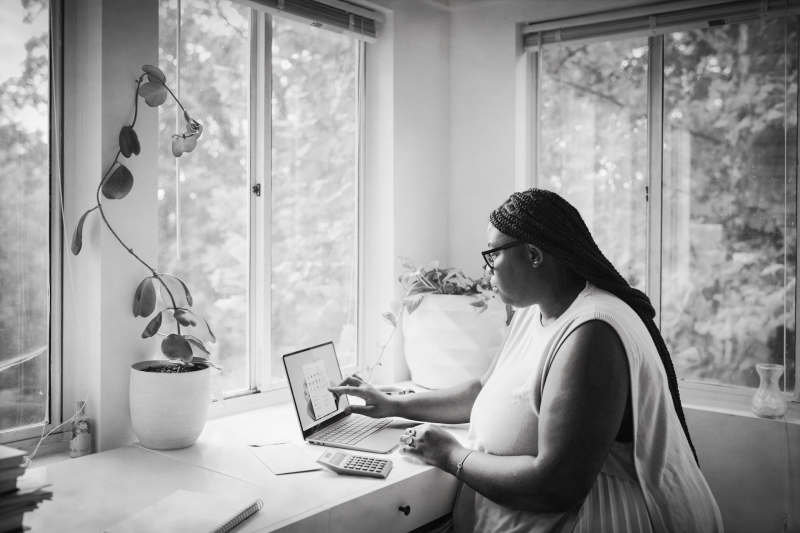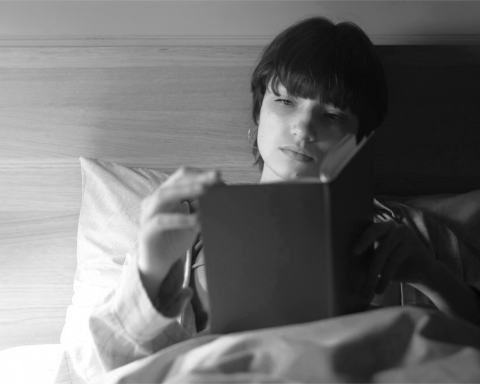So, you’re about to start another day working at home. You sit at your desk, open your laptop, and then you start to feel uncomfortable. You can’t help but take a look at your home office and think, “I wish I could change this setup to make my day more energizing.”
Well, you’re not alone. Many professionals working from home may have established a standard setup for their home office: a chair, a laptop with an extra monitor and keyboard, and a desk. However, like you, some might need different tech essentials or a different ambiance for better energy while working.
No need to worry, this article will guide you on how to accomplish that. You’ll find five practical tips to rethink and customize your home office to reflect your personal workflow and management style better.
Start reading to transform your workspace into a productive zone that truly supports your workday.
Why you should customize your home office
The modern office has moved beyond the traditional cubicle. More than ever, remote and hybrid work have become increasingly prevalent, establishing themselves as the new standard in most workplaces. The impact? Employees have the flexibility to juggle multiple responsibilities from one place.
However, this perk requires employees to create a productive place on their own. Working from home, professionals must create an organized workspace with suitable furniture to have a productive environment.
Why? Read on to learn more.
The role of furniture in supporting modern workflows
Standard office setups often fall short when it comes to flexibility and comfort, or, in other words, they’re ergonomically deficient.
This is because those standard setups have a rigid design that mismatches your working movement, eventually bringing risks of pain in various parts of the body. For example, the absence of a wrist rest can cause the wrist to be in a straight position that doesn’t follow its natural curve, eventually leading to wrist pain.
As such, the right furniture is important for long-term physical well-being. For example, a chair with a soft surface, proper height, and armrests can support your arms and legs, allowing you to stay on a flat surface naturally. The chair will enable users to lower their arms and position their feet on the floor.
Additionally, the right furniture allows for greater flexibility in movement, such as standing or sitting easily, which provides more comfort and productivity for workers.
How organizing improves mental clarity and output
An organized workspace can also improve your focus and productivity.
As boundaries between home and work become blurred, distractions may arise from family, neighbors, or even household chores. Having a dedicated workspace can help reduce distractions while working from home and improve your focus throughout the day.
An organized workspace also supports mental clarity by reducing visual distractions and creating a sense of order. When your environment is tidy and well-structured, it allows your mind to focus more easily, think clearly, and process information efficiently.
In addition to a dedicated workspace, a thoughtfully personalized one can also improve your productivity. When you create a space with elements that support your workflow, it becomes more enjoyable to be in. You’ll have the satisfaction of being in that space, and that sense can lead to more productivity.
Actionable insights for customizing your home office
Now you know that a customized home office can improve your focus, satisfaction, and productivity.
Read the next section to explore the five home office setup ideas!
Assess your workflow and space needs
The first step in customizing your home workspace is to understand the type of work you do. Are you in a creative field, or is your work more administrative and structured?
If you work in a creative field, a flexible, inspiring space with elements like mood boards and varied lighting can spark innovation. For more administrative or structured work, a clean, organized setup with minimal distractions supports focus and efficiency.
Knowing this will help you design a space that truly supports your needs. Once you’ve identified your work style, consider how you prefer to operate on a typical workday. You can use these questions below as a guide:
- Workflow. Do you rely heavily on physical documents, or is most of your work done digitally?
- Equipment. Are there any specific tools, gadgets, or appliances that would enhance your productivity?
- Workspace style. Do you prefer a minimalist setup, or do you thrive in a more dynamic and personalized environment?
Personalize your environment for comfort and inspiration
The second step after refreshing your workspace is to personalize it. Adding personal elements can help you feel more comfortable and inspired during work. You can refer to these elements as needed to stay motivated throughout the day. Some examples of personal touches are:
- Artwork. Hang prints, paintings, or photos that inspire you or bring a sense of calm. Whether it’s abstract art, motivational quotes, or nature photography, choose visuals that resonate with you.
- Lighting. Try incorporating warm desk lamps, string lights, or natural light sources to create a cozy, energizing vibe.
- Accessories. Stylish or meaningful items, such as a favorite mug, a decorative organizer, or a unique pen holder, can make your simple desk more inviting.
- Photos of loved ones. Displaying pictures of family, friends, or pets can add a personal touch and emotional comfort, helping you feel more grounded and connected throughout your day.
Read more: How to Organize Your Home Office so You Enjoy Working From Home
Choose the right furniture for your tasks
The third step is to select the right work-from-home office furniture. You can evaluate your current furniture and determine whether you need other options to help you be more efficient in completing your work. Take a look at some examples below:
- Desks. A well-sized, ergonomic desk to spread out your tools and devices while maintaining a clutter-free zone. Standing desks or adjustable-height desks can also offer added flexibility and support throughout the day.
- Custom office furniture. Tailored pieces, like a custom-built shelving unit, can maximize your space and help organize your work materials more efficiently.
- Built-in office cabinets. Great for storing files, equipment, or supplies that you don’t need within arm’s reach but want to keep organized and out of sight.
If space is limited, consider compact or multifunctional furniture, such as wall-mounted desks, foldable tables, or ottomans with hidden storage. These space-saving options are ideal for smaller homes or multi-purpose rooms.
Optimize lighting and ergonomics
The next step is to create a comfortable and functional home office to improve physical well-being.
Proper lighting and ergonomically sound furniture play a crucial role in reducing eye strain, preventing physical discomfort, and maintaining focus throughout the day. You can optimize them by following these tips:
- Lighting placement. Position your desk beside a window (not directly in front or behind) to reduce glare, and use adjustable task lighting for focused work. Minimize glare by angling your screen, using an anti-glare filter, and softening harsh light with curtains or blinds.
- Ergonomic furniture. Use a chair with adjustable height and lumbar support; ensure your feet are flat on the floor. Ensure your desk allows your arms to rest comfortably. Keep your screen at eye level and an arm’s length away to prevent neck and eye strain.
- Simple upgrades. Add a footrest, laptop stand, external keyboard, or lumbar cushion, and take regular stretch breaks to reduce fatigue.
Read more: Science-Backed Remote Work Office Setup to Avoid Eye Strain
Create boundaries and flexible zones
The last step is to establish boundaries in your workspace to have more privacy and focus at home. This is especially necessary when you need to attend a meeting, focus on deep work, or think creatively. You can try some of these tips below to create that zone:
- Zoning with furniture. Use bookshelves, desks, or rugs to visually separate areas for focused work, creative tasks, or virtual meetings, without the need for building walls.
- Movable dividers. Use folding screens, curtains, or portable panels to create privacy when needed and open up the space when not in use.
- Flexible seating. Incorporate seating options like floor cushions, a standing desk converter, or a small side chair to shift posture and mindset depending on the task quickly.
In conclusion
An uninspiring or poorly matched home office can quietly drain your energy, focus, and creativity.
But it doesn’t have to stay that way. By reassessing your daily needs and applying the five practical tips outlined in this guide, you can transform your workspace into a place that’s both personal and optimized for productivity.
Even small changes, such as adjusting your lighting, upgrading your chair, or adding meaningful decor, can have a significant impact. Start today, and customize your home office into a space that truly supports your workflow and well-being.
If you want to see more resources on home office organization, check out the Home Organization Science Labs. The lab uses the research of the Institute for Life Management Science to produce courses, certifications, podcasts, videos, and other tools. Visit the Home Organization Science Labs today.
Photo by Windows on Unsplash



